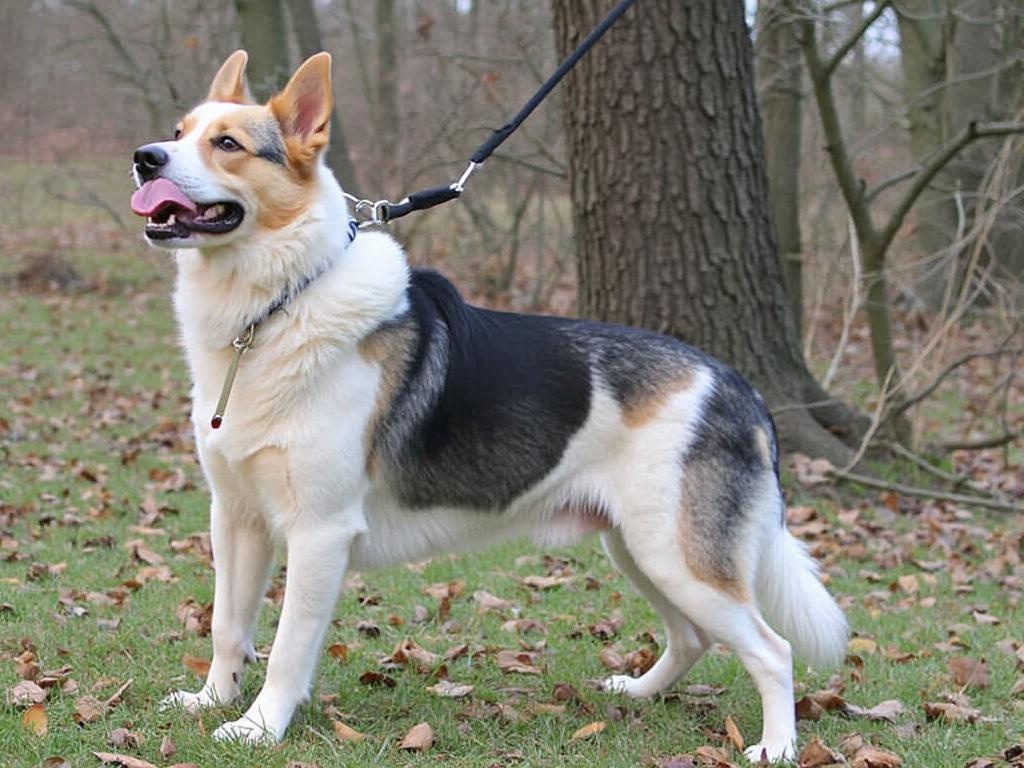Effective Dog Training Techniques for Beginners

Understanding the Importance of Dog Training
Welcoming a dog into your home is an exciting adventure, but it comes with its own set of challenges. Understanding how to train your new furry friend is crucial to building a harmonious relationship. Effective dog training techniques can make all the difference in ensuring your dog grows up to be a well-behaved companion. The connection between a well-trained dog and a happy household cannot be overstated; it reduces misunderstandings and minimizes potential behavioral issues.
Why Training Matters
Training not only teaches your dog desired behaviors but also strengthens the emotional bond between you. Many dog owners find that their pets respond better when a clear set of expectations is established. For instance, teaching basic commands such as “sit,” “stay,” and “come” can prevent unwanted behaviors, such as jumping on guests or bolting out the door.
Furthermore, consider how training plays a significant role in a dog’s mental stimulation. Dogs are intelligent creatures that thrive on challenges. By introducing tasks and commands, you provide an enriching environment that keeps their minds active and engaged. This is particularly relevant in a bustling environment like Nigeria, where distractions are many, and dogs can easily become overwhelmed.
Effective Training Techniques
Training can seem daunting for beginners, but it doesn’t have to be! Here are a few effective techniques that can set you on the right path:
- Positive Reinforcement: Rewarding good behavior fosters an encouraging environment. For example, every time your dog sits on command, giving them a treat or praise reinforces that behavior. This method is proven to be more effective than punishment because it builds trust between you and your dog.
- Consistency: Establishing a routine helps your dog understand what’s expected. If you articulate commands and follow through at the same times daily, your dog will begin to anticipate your expectations, which aids in their learning process. In Nigeria, integrating family members into training routines can ensure that commands and rewards are uniformly applied, creating a cohesive learning environment.
- Socialization: Exposing your dog to different people and places minimizes fear and anxiety. Taking your dog to local markets, parks, or community events can help them adapt to various stimuli, fostering a more confident demeanor. Socialization is particularly important in urban centers, where diverse experiences can enhance your dog’s adaptability.
With these techniques, simple yet effective strategies can lead to remarkable results, creating not just a well-behaved dog but a loyal companion. Additionally, consider local resources such as training classes or community groups in Nigeria. Many cities and towns have dog training clubs where experienced trainers can provide invaluable guidance and shared experiences among fellow dog owners.

As you embark on this journey, remember that every dog is unique, and patience is key. This guide will explore various dog training techniques suitable for beginners, providing insights on how to implement them effectively. Prepare to unlock your dog’s potential and strengthen the bond you share as you navigate the rewarding experience of dog training together.
SEE ALSO: Click here to read another article
Exploring Training Methods for Success
When it comes to effective dog training techniques for beginners, understanding your dog’s learning style plays a pivotal role in shaping a successful training regimen. Each dog is an individual, and what works for one may not necessarily work for another. Hence, a methodical approach that considers your dog’s unique personality will equip you for a fruitful training journey.
Positive Reinforcement in Depth
One of the cornerstones of dog training is the use of positive reinforcement. This technique hinges on the idea that rewarding desirable behavior encourages its recurrence. For example, when your dog obeys a command like “sit,” showering them with praise or a small treat creates a positive association with that command. This method not only nurtures trust between you and your pet but also enhances their overall learning experience.
In practice, you might combine this with a clicker, a small device that makes a clicking sound at the moment your dog performs the desired behavior. The click serves as an audible marker, signaling to your dog that they have done something right and a reward is imminent. This technique can be particularly effective for beginners, as it creates clarity during the training process.
The Role of Consistency
Another vital aspect of training is consistency. Establishing a solid routine is essential to your dog’s understanding of commands and expectations. This means using the same words and gestures every time you give a command. If you use “down” one day and “lie down” the next, your dog may become confused. In Nigeria, where cultural nuances can influence interactions, ensuring that all family members are on the same page is crucial for maintaining a clear and uniform approach to training.
Additionally, integrating specific training times into your daily schedule can provide structure for your dog. Early morning and evening sessions tend to be effective, especially when there are fewer distractions, such as younger family members or outside noises. Short, frequent sessions, lasting about 5-10 minutes, can also prevent both you and your dog from becoming bored or overwhelmed, making learning feel more like play and less like work.
The Power of Socialization
Socialization is another fundamental component of training that often gets overlooked. It involves exposing your dog to various people, environments, and experiences. This is especially significant in Nigeria, where bustling markets and lively local events present both challenges and opportunities for your dog. Introducing your pet to new stimuli helps them develop confidence and adaptability, reducing the likelihood of fear or aggression in unfamiliar situations.
Consider bringing your dog to public parks or participating in community dog walks. Such interactions not only allow your dog to explore the world but also offer a chance for you to bond over shared experiences. By reinforcing their training in diverse settings, you are effectively preparing them to navigate everyday life.
With a combination of positive reinforcement, consistency, and socialization, you will set a solid foundation for your dog’s training journey. As you continue to explore these fundamental techniques, keep in mind that patience and commitment are essential. Your dog is an eager learner, and your guidance will unlock their potential, creating a rewarding relationship that can last a lifetime.
| Dog Training Method | Key Benefits |
|---|---|
| Positive Reinforcement | Builds trust and strengthens bonds between the dog and owner through rewards and praise. |
| Clicker Training | Enhances communication by using sound cues that strongly associate behaviors with rewards. |
| Leash Training | Promotes safe walking habits, making outings more enjoyable for both dog and owner. |
One of the foundational aspects of effective dog training techniques is understanding the various methods and their implications. For beginners, it’s crucial to choose methods that resonate with both the trainer and the dog. Exploring options, such as positive reinforcement, not only anchors desired behavior but also cultivates a trusting relationship, leading to lasting results. When engaging in clicker training, the clarity of the click sound acts as an immediate signal that helps dogs associate their actions with rewards, fostering a quicker learning curve.Additionally, implementing leash training prepares your dog for enjoyable and safe walks, contributing to their socialization and exercise needs. Each technique plays a distinctive role in shaping your dog’s behavior and responsiveness. Understanding them not only aids in training but also enhances overall dog-owner communication, enriching your time together and building a harmonious life.
RECOMMENDED: Check out this similar article
Advanced Techniques for Effective Dog Training
While the foundational techniques of positive reinforcement, consistency, and socialization lay the groundwork for successful dog training, several advanced methods can further enhance your approach, especially for beginners looking to deepen their understanding of canine behavior.
Understanding and Using Body Language
A strong avenue for effective dog training is the use of body language. Dogs are naturally attuned to the non-verbal cues of humans. Therefore, being aware of your own body movements can significantly influence your dog’s response. For instance, standing tall with a relaxed posture can convey confidence and leadership, while a hunched stance might indicate uncertainty.
Additionally, maintaining eye contact can reinforce the bond between you and your dog. Dogs often look for visual confirmation of guidance, and maintaining engagement can keep their focus on you during training sessions. You can also observe your dog’s body language to gauge their comfort level—if your dog appears anxious or disinterested, it may be beneficial to adjust your training technique or take a break.
Utilizing Leash Training Techniques
In urban areas of Nigeria, where sidewalks may be packed with people, cars, and other distractions, mastering leash training is critical. Teaching your dog to walk politely on a leash provides safety and enhances the training experience. Start by ensuring that your dog understands ‘heel’ and ‘let’s go.’ Reward them with treats and praise when they remain by your side without pulling.
To address pulling, consider the “stop and go” technique. Whenever your dog begins to pull, stop walking immediately. Wait until they return to your side, then resume walking. This technique teaches your dog that pulling will not get them where they want to go. Ensuring your dog is adept at leash training will also make outings in crowded spaces more enjoyable and manageable.
Taking Advantage of Group Classes
Participating in group training classes can provide invaluable benefits to beginners. Not only do these classes typically offer expert instruction, but they also expose your dog to new environments and other dogs. In a bustling community like Lagos, engaging with other pet owners creates a sense of camaraderie and support, allowing you to exchange tips and learn from one another’s experiences.
Group sessions also mimic real-life distractions, giving both you and your dog the opportunity to practice commands amidst stimuli that might otherwise prove distracting during solo training sessions. Look for reputable trainers who can provide classes in your area; often, pet stores and veterinary clinics host such events.
Incorporating Fun and Games
Training does not have to be solely about commands and discipline. Incorporating fun and games can heighten your dog’s enthusiasm for learning. Interactive toys, such as puzzle feeders, encourage mental stimulation while rewarding your dog for problem-solving.
Play games like fetch or hide-and-seek, which reinforce commands like “come,” “stay,” and “drop it.” Using these playful strategies can create a joyful association with training, fostering a positive learning environment. There are also local dog clubs in Nigeria that engage in fun agility training sessions, which can provide both exercise and enrichment.
Ultimately, embracing advanced techniques such as understanding body language, leash training, group classes, and incorporating fun into your training routine will help you maximize your effectiveness in teaching your dog. As a beginner, you can create a holistic learning atmosphere while strengthening your bond with your pet, ensuring a fulfilling training journey from the outset.
YOU MAY ALSO LIKE: Read read another article
Conclusion
In conclusion, embarking on the journey of dog training as a beginner can be both fulfilling and challenging. By implementing the effective dog training techniques we’ve discussed, you will not only foster obedience but also strengthen the bond between you and your dog. Key strategies include positive reinforcement to encourage desirable behaviors, practicing consistency to create a structured learning environment, and facilitating socialization to prepare your dog for real-world situations.
Moreover, advanced techniques, such as understanding body language and mastering leash training, play pivotal roles in enhancing communication with your canine companion. Participating in group classes offers invaluable opportunities for interaction and learning from experienced trainers and fellow dog owners, fostering a sense of community. Lastly, infusing your training sessions with fun and engaging activities will make the experience enjoyable for both you and your furry friend, transforming learning into a dynamic and rewarding process.
As you dive into this exciting adventure of training, remember to be patient, stay positive, and adapt your methods to suit your dog’s unique personality and needs. In a vibrant society like Nigeria, where dogs are cherished members of the family, investing time in effective training can lead to a lifetime of joy, companionship, and mutual respect between you and your pet. Take the first step today, and unlock the potential for a well-trained and happy dog.


